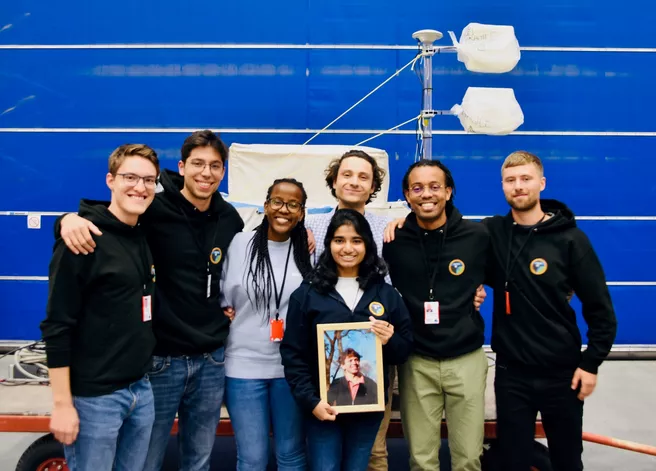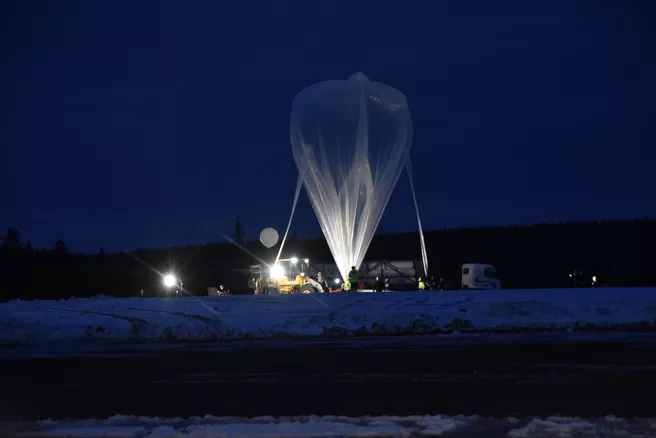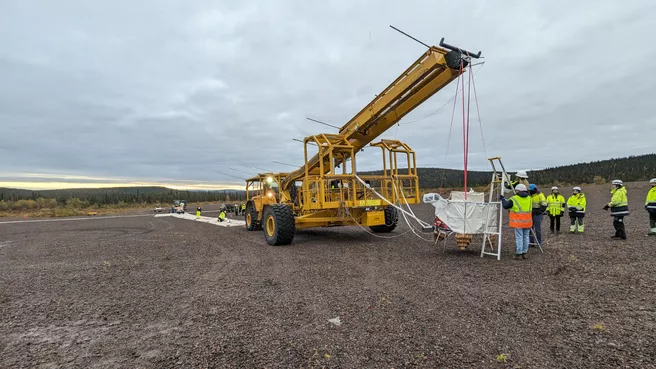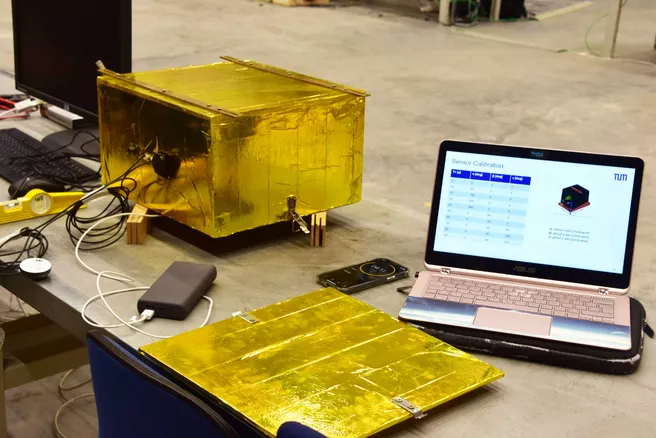Interview: Cornelia Freund
ED: What is your project about?
Jonathan: Our student project, Miniaturized Multi Sensor Box for spaceborne geodetic Applications (SBGA), was on board the BEXUS 32 research balloon. Our experiment measured the gradual changes in the Earth's gravity field during the ascent and descent phases and evaluated the quality of the instruments used by comparing the determined gradient with existing gravity field models. To do this, we combined inertial measurements with Global Navigation Satellite Systems (GNSS) measurements in a Kalman filter, separating gravitational and kinematic accelerations. The main sensors are small, low-cost inertial measurement units (IMUs) typically used in smartphones, cars, planes, or satellites: two accelerometers, a magnetometer, a barometer, and two GNSS antennas. The experiment results will provide valuable insights into how small, cost-effective sensor boxes and miniaturized instruments work for airborne gravimetry and CubeSat applications.
ED: How long have you been working on the project, and what is the composition of your team?
Jonathan: Our Bexus team has been around for about two years, and as a founding member, I have been involved from the beginning. Many different skills are required to successfully carry out the balloon experiment. Most of the team members come from either the ESPACE Masters or Geodesy and Geoinformation. The project also requires a combination of different skills from the fields of geodesy, thermodynamics, and aerospace. At the moment, fortunately, an electrical engineering student is strengthening our team. Scientifically, we are supported by Prof. Roland Pail and colleagues from the Chair of Astronomical and Physical Geodesy.
ED: What were the milestones of your project?
Jonathan: We went through the entire process of a space project, from the idea and planning to the - now still pending - publication of the results. We developed the idea in the summer semester of 2021 and submitted our proposal in October 2021. We were finally selected in December 2021. After that, we continued according to a schedule with defined goals: designing, building, and testing the experimental equipment were the time-consuming phases. In critical design reviews, our sponsors checked the development steps of our plan again and again, and we had to prove the safety and functionality of our experiment. Actually, only about twelve months were supposed to pass between theoretical planning and practical implementation; however, for various reasons, the launch of the Bexus balloons 2022 was canceled, so we only started this autumn. Our mission remained tricky until the last day because the weather conditions could have been more favorable: First, it snowed almost 30 centimeters, and on the last possible day, 24 September 2023, there was sometimes too little, sometimes too much wind. Then, fortunately, Bexus 32 was able to take off after all, and we were able to carry out the tests during the flight.
ED: What were the most significant challenges? What experiences have you gained?
Jonathan: From my own personal perspective, I have learned a lot. I have gained experience in space-related programs and acquired new technical knowledge, for example, in fields that were somewhat "exotic" for me, such as thermodynamics or electrical engineering. However, the project's success is essentially thanks to our team leader and initiator, Matthias Graf, who sadly passed away far too early. Without him, none of this would have happened, and he managed to lead the team through highs and lows and changing generations of team members for a long time. It is great to see how we have grown together as a team. The ten days of "space feeling" in northern Sweden were undoubtedly a highlight - including the Northern Lights we saw there.
ED: What happens with the data?
Jonathan: We are still at the very beginning of our evaluation. By the end of December, we will present the final report, including a detailed description of the experimental setup, the functionality of the tests, the resources, and the data obtained. But it is still open in which direction the analysis will go and what will happen with the results.
Information on Bexus Balloon 32:
Balloon Experiments for University Students (BEXUS) is a German-Swedish student program founded in 2007 by the Deutschen Zentrums für Luft- und Raumfahrt (DLR) and the Swedish National Space Agency (SNSA). In the program, university students conduct scientific experiments with balloons in the stratosphere. The student projects are organisationally supported in Germany by the Center of Applied Space Technology and Microgravity (ZARM). The balloon's gondola is 1.16 x 1.16 x 0.84 meters and can carry a payload of up to 300 kg.
Flight data:
4:30 am Countdown start
8:07 am Lift-Off
9:34 am Float phase, from which the balloon reached its maximum altitude of 27.6 km
11:05 am Cut-off of the gondola and start of descent on a parachute
11:38 am Touchdown
Total flight time: 3:31 hours
Links:
Project SBGA
Degree program ESPACE
Chair of Astronomical and Physical Geodesy
Rexus/Bexus Project



